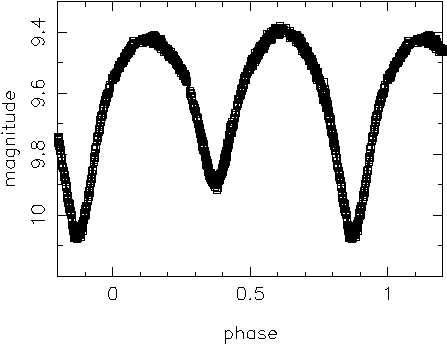 |
Department of Physics | AstroLab |
How to make good photometric measurements
Over the years Astrolab students have produced many, many excellent light curves of variable stars and asteroids.
For example this is the light curve that was measured for CW Cas which has a period of 7.6 hours.

However there are many, many ways to acquire poor photometric data.
These including
At the telescope
- observing in very poor conditions, although observing in mediocre conditions is often possible as only relative photometry within the CCD field-of-view is being undertaken
- not checking the photometry in real-time, particular the run of the magnitude difference of the two comparison stars
- saturating either the target object or one/both of the comparison stars
- letting either the target object or one of the comparison stars drift too close to the CCD field edge
- checking that the dome shutter is tracking telescope properly ("re-Home" dome if necessary)
- selecting a comparison star that is a variable star (this only happens rarely)
- not cooling the CCD down (i.e. this will mean a high dark frame level and many hot pixels)
- not noticing that the target asteroid has moved close to a star
- using a comparison star that is too faint
- observing with an internally or externally dewed up telescope
- selecting the wrong photometric filter
- observing the target at high airmass (i.e. greater than 2 )
- observing close to a bright Moon or bright star
- if not flat-fielding the images, placing one of the objects on/near a CCD "dust speck"
- observing in windy conditions where the telescope is buffeted
- taking short exposures and getting poor S/N data
- not switching off the monitors and the lights in the dome
In the Lab
- not understanding the basic principles of astronomical photometry
- selecting aperture photometry radii that are either too small or too large
| Back to the AstroLab Home Page | jrl | 2020-Jun-17 12:47:08 UTC |